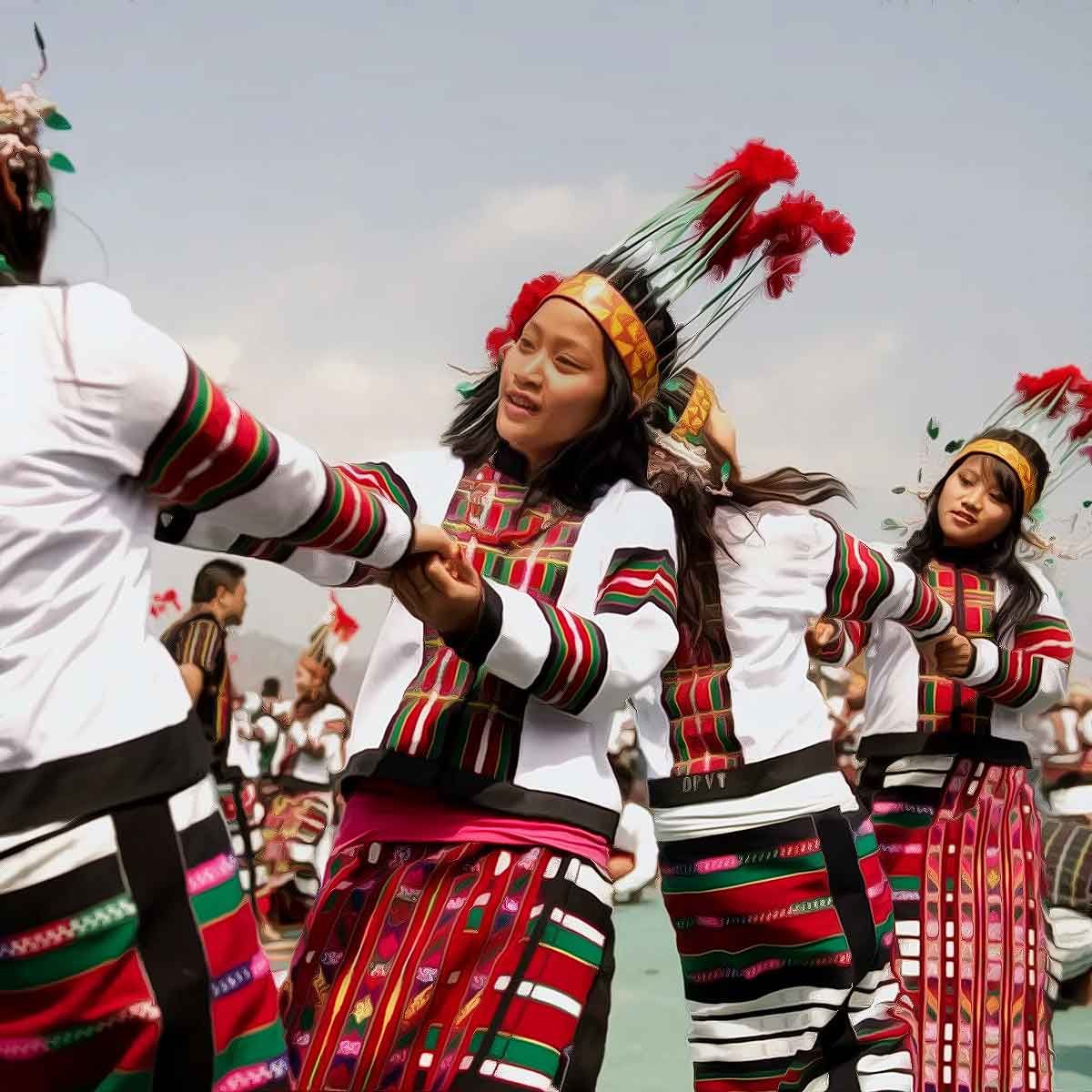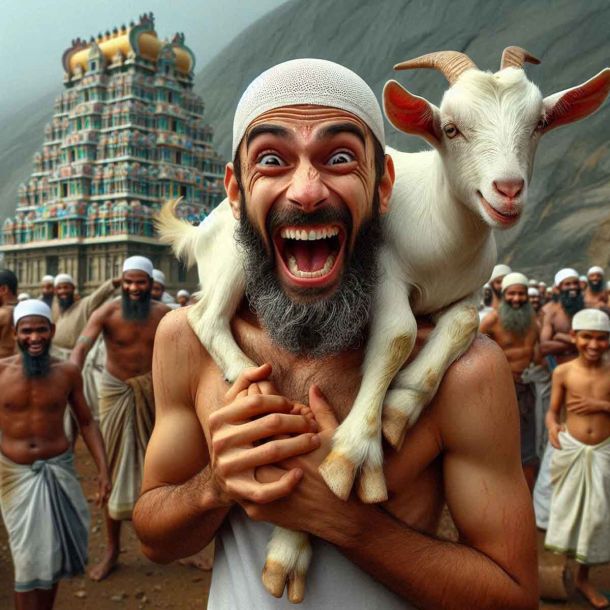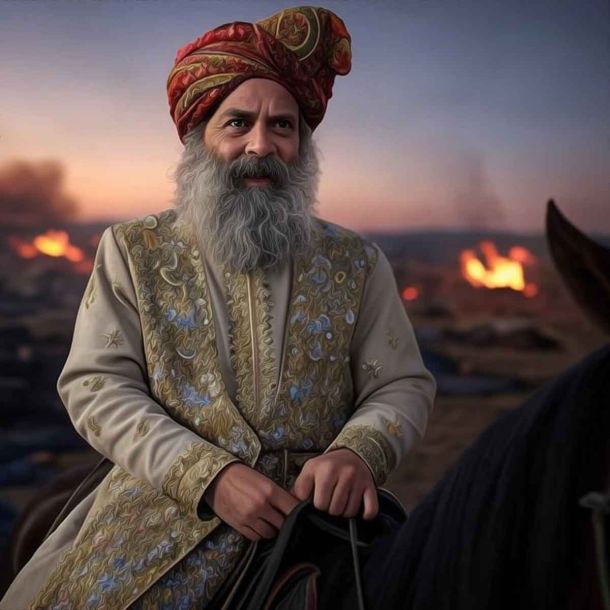More Coverage
Twitter Coverage
Satyaagrah
Written on
Satyaagrah
Written on
Satyaagrah
Written on
Satyaagrah
Written on
Satyaagrah
Written on
Join Satyaagrah Social Media
The rhythmic beats of Cheraw dance with its swaying bamboo staves and synchronized movements is a testament to the harmony and unity of Mizoram's tribal traditions and is the heartbeat that connects past, present and future, nurturing a sense of belonging

In the heartlands of Mizoram, the air hums with anticipation as the vibrant tradition of Cheraw, the mesmerizing 'Bamboo Dance,' takes center stage. This dance, rooted in the cultural values of the land, weaves together creativity and excitement with every rhythmic beat of the bamboo staves. From ancient rituals of honoring departed souls to the joyful celebrations of the Chapchar Kut festival, Cheraw has evolved, becoming a vibrant expression of Mizo heritage.
|
As dusk settles, groups of talented performers gather, their spirits aflame with the anticipation of showcasing their skills. With precision and grace, pairs of male dancers grasp the bamboo staves, clapping them together rhythmically, resonating with the heartbeat of their ancestors. Amidst this symphony, female dancers exude elegance, their nimble feet and lithe movements weaving through the bamboo maze, a tapestry of fluidity and harmony.
The dance comes alive, an ode to the spirit of unity and celebration. Each step is a testament to the cultural tapestry that Mizo people hold dear, paying homage to their connection with nature and the cycles of life. As the bamboo staves create a resonating rhythm, echoing the pulse of the land, the air fills with excitement and jubilation, carrying the essence of Mizoram's cultural values.
Cheraw is not just a dance; it is a vibrant expression of Mizoram's soul. It embodies the resilience and joy of its people, reflecting their deep-rooted connection to nature and the rich traditions passed down through generations. As the dancers move with finesse and passion, their movements echoing the sway of bamboo and the flight of birds, spectators are transported to a realm where tradition and creativity intertwine, leaving them in awe of the cultural treasures that flourish in Mizoram.
In the ethereal realm of Cheraw, the dance steps mirror nature's graceful wonders—the sway of trees and the flight of birds. The performers, with lightning-fast and skillful movements, captivate all who witness their awe-inspiring artistry. As their bodies become an extension of the surrounding beauty, the vibrant costumes they wear elevate the dance to a kaleidoscope of colors.
Adorned in magnificent attire, the women become living embodiments of grace and elegance. The Thihna necklace adorns their necks, shimmering like dewdrops in the morning sun. Atop their heads, the Vakiria head-dress, crafted from bamboo and adorned with feathers and bright ornaments, adds a touch of regal allure. Their Kawrchei blouses and Puanchei sarongs, resplendent in white, red, green, and black hues, swirl with each movement, evoking the vibrant spirit of Mizoram.
The men, too, embrace their cultural heritage with pride. Their bandanas, symbolizing resilience and determination, cling tightly to their brows, as if echoing the land's steadfast spirit. Draped in Mizo shawls, their vibrant colors and intricate patterns pay homage to the ancestors who walked these very paths, passing down stories through the generations.
As Cheraw enchants the world, its fame begins to spread across distant lands. In 2010, the dance secured its place in the illustrious pages of the Guinness Book of World Records. A staggering ten thousand seven hundred and sixty-three souls united in harmony, their collective movements setting a global record for the largest dance ensemble ever witnessed. The Assam Rifles field, though accommodating only a fraction, could not contain the passion that surged through the veins of Mizoram. Along a three-kilometer stretch of road in Aizawl, over eight thousand dancers weaved their way, infusing the capital city with the electrifying spirit of Cheraw.
This growing recognition is a testament to the universal appeal of Mizoram's cultural heritage. Cheraw, with its mesmerizing choreography, transcends boundaries and ignites a shared appreciation for art and tradition. It serves as a vibrant bridge, connecting hearts from every corner of the world to the vibrant spirit of Mizoram, leaving a lasting imprint on the global stage.
Cheraw, with its captivating essence, transcends borders and reaches far-flung corners of the world. In a remarkable display of recognition, it graced the prestigious International Dance Day program held by the Church of Scientology in London on 27 April 2019. This event aimed to celebrate the splendor of art, culture, and empowerment, shedding light on the tribal communities of India.
As the rhythmic beats of Cheraw resonated through the halls of London, it stood alongside other mesmerizing traditional dances, showcasing the rich diversity of India's tribal heritage. The Garo dance from Meghalaya, the Siddi dance from Karnataka, and the Pavara dance from Maharashtra joined hands with Cheraw, painting a vivid tapestry of artistic expression.
The realization that Cheraw is gradually receiving the recognition it deserves is truly heartwarming. This captivating art form demands unwavering dedication, relentless practice, and profound skill to master. The rhythmic symphony of bamboo, occasionally harmonized by the resonant tones of gongs and drums, intertwines with the dancers' innate grace and impeccable synchronization, enchanting all who witness this feast for the senses.
Cheraw's journey, from the humble landscapes of Mizoram to the grand stages of international events, speaks volumes about its timeless allure and the profound impact it has on those who experience it. It serves as a testament to the enduring power of cultural traditions, bridging gaps, and fostering a deeper understanding of the diverse tapestry of humanity. With every mesmerizing performance, Cheraw reaffirms its place as a treasure, treasured not only in Mizoram but also in the hearts of people around the globe.
The History of Cheraw
Cheraw, also known as the 'Bamboo Dance,' has a rich history deeply rooted in the cultural heritage of Mizoram. It is believed to have existed since the 1st century C.E. Initially, Cheraw was performed as part of rituals to bring peace to the departed soul of a mother who had left her newborn child. Over time, it transformed into a celebratory dance performed on various festive occasions, notably the Chapchar Kut festival held in March.
The exact origin of Cheraw is unknown, but it is believed to have originated in the early 1st century CE. The dance is thought to have developed from a ritual dance performed by the Mizo people to appease the spirits of the forest.
The dancers would use bamboo poles to create intricate patterns and movements, and they would sing and chant as they danced. The dance was seen as a way of communicating with the spirits of the forest, and it was believed that the dance would bring good luck and prosperity to the community.
Today, Cheraw is one of the most popular dances in Mizoram. It is performed on a variety of occasions, and it is a way for the Mizo people to express their culture and heritage.
Instruments Used in Cheraw: The primary instrument used in Cheraw is bamboo. Two bamboo staves, placed horizontally on the ground, serve as the rhythmic backbone of the dance. The male performers, typically in pairs, hold two bamboo staves and clap them together and on the floor to create a captivating rhythm. Occasionally, gongs and drums accompany the bamboo sounds, enhancing the overall musical experience.
Famous Songs: While Cheraw is a dance form that primarily focuses on rhythmic movements, several songs complement the performance. Traditional Mizo songs, often sung in the local language, are chosen to match the energy and spirit of the dance. These songs depict the rich folklore, mythology, and tales of Mizoram, adding depth and meaning to the Cheraw performance.
Cultural Attire in Cheraw: The vibrant cultural attire worn by the Cheraw performers adds a touch of splendor to the dance. Both male and female dancers don traditional Mizo costumes that reflect the cultural identity of Mizoram.
For women, the attire typically includes:
- Thihna: A necklace that adorns their necks.
- Vakiria: A headdress made of bamboo and embellished with feathers and other decorative elements.
- Kawrchei: A blouse that forms part of their ensemble.
- Puanchei: A sarong, available in various colors such as white, red, green, and black, which is wrapped around the waist.
Men, on the other hand, wear a bandana and a Mizo shawl, each symbolizing the strength, pride, and traditions of Mizoram.
The cultural attire worn by the Cheraw dancers not only enhances the visual spectacle but also represents the cultural values, customs, and traditional aesthetics of Mizoram. The colors, patterns, and accessories embedded in their costumes reflect the region's unique identity and inspire a sense of pride and connection among the performers and spectators alike.
Cheraw, with its profound history, captivating music, vibrant attire, and intricate movements, stands as a testament to the cultural heritage and artistic richness of Mizoram. It continues to enchant audiences, offering a window into the soul of this vibrant region and preserving its traditions for generations to come.
Anthurium Festival
The Anthurium Festival is a vibrant celebration held annually in Mizoram, India, to showcase the natural beauty and cultural significance of the Anthurium flower. The festival is a grand display of art, horticulture, music, dance, and traditional customs, attracting visitors from near and far.
The Anthurium Festival is a 3 day-long event organized every year in September by the State govt. of Mizoram to promote tourism in the state and also encourage Anthurium cultivation in Mizoram. It is a very popular festival and has slowly become one of the most prominent tourism festivals in the North East region.
The Anthurium Festival is celebrated every year at the tourist resort in Reiek Village at the foothills of the mystic Reiek Mountain. Set in an idyllic and mystic location about 20 km away from Aizwal, the capital city of Mizoram, the serene beauty of Reiek Village adds an amazing charm to the beautiful Anthurium Festival. Beautiful Anthurium flowers grown in Mizoram are put on display and sold during the Anthurium Festival and tours to amazing Anthurium plantations are also conducted during the 3days. What started as a way of promoting tourism and the amazing homegrown Anthurium flowers in Mizoram has slowly become one of the most anticipated festivals for tourists both from within and outside the country.
Anthurium Festival is also a festive event where all the various Mizo tribes get to come together and showcase their amazing cultures and traditions. The 3 day-long celebrations are marked by a colorful display of various Mizo cultures and traditions; indigenous games and sports, mouth-watering traditional Mizo delicacies, folk songs, and dances, traditional methods of harvesting and cooking, handicrafts, etc.
Various local products of Mizoram like fruit juices, pickles, handicrafts, handloom items, bamboo products, etc are also put on display and sold during the festival. Fashion shows and music concerts highlighting the talented Mizos are also important aspects of the Anthurium Festival. Anthurium Festival, for a tourist, is indeed a great festive moment to enjoy the vibrant diversity of Mizoram. A festival that not only highlights the tourism potential of the state but also showcases the amazing culture and tradition of the Mizos, the Anthurium Festival is a must-attend.
The Anthurium flower holds a special place in Mizoram's flora, with its striking colors and unique shape. It symbolizes prosperity, beauty, and abundance, making it a cherished flower in the region. The festival aims to promote the cultivation, conservation, and commercial potential of Anthurium flowers while preserving and showcasing the cultural heritage of Mizoram.
During the festival, a grand exhibition is set up, displaying a stunning array of Anthurium flowers. Visitors are treated to a mesmerizing spectacle of vibrant blooms in various shapes, sizes, and hues. From the deep crimson to the delicate pink and pristine white, the Anthuriums create a breathtaking panorama of colors that captivate the senses.
In addition to the floral display, the Anthurium Festival is a hub of cultural activities and performances. Traditional music and dance performances by local artists fill the air with a melodic charm, celebrating the rich cultural heritage of Mizoram. Dancers clad in colorful traditional attire gracefully move to the rhythms, mesmerizing the audience with their skill and elegance.
The festival also hosts numerous competitions, including flower arrangement contests, photography contests, and traditional cooking competitions, allowing participants to showcase their creativity and skills. These activities foster a sense of community participation and encourage the preservation of traditional arts and practices.
As Mizoram is known for its warm hospitality and delectable cuisine, the Anthurium Festival offers a delightful gastronomic experience. Food stalls are set up, serving a wide array of local delicacies, giving visitors a chance to savor traditional Mizo flavors and culinary delights.
The Anthurium Festival is not limited to its venue; it also extends to surrounding areas, encouraging eco-tourism and showcasing the natural beauty of Mizoram. Visitors can embark on guided tours to explore the lush landscapes, visit Anthurium farms, and experience the serene beauty of the region.
The festival serves as a platform for local artisans, craftsmen, and entrepreneurs to showcase and sell their handmade products and traditional crafts. It provides them with opportunities for economic empowerment and supports the local economy.
The Anthurium Festival has gained popularity over the years, attracting visitors from across India and beyond. It has become a symbol of Mizoram's cultural identity, promoting tourism, fostering community engagement, and celebrating the beauty of nature. The festival not only brings people together but also highlights the significance of conserving the environment and nurturing the rich cultural heritage of Mizoram.
|
References:
Cheraw Dance: A Traditional Dance of Mizoram by Lalremruata. This book provides a comprehensive overview of the Cheraw dance, including its history, origins, and performance.
The Cheraw Dance of Mizoram by Lalchungnunga. This book provides a more in-depth look at the Cheraw dance, including its symbolism, costumes, and music.
The Bamboo Dance: A Cultural Journey Through Mizoram by Pradip Kumar Deka. This book provides a cultural overview of Mizoram, with a focus on the Cheraw dance.
The Cheraw Dance: A Living Tradition by the Government of Mizoram. This website provides a brief overview of the Cheraw dance, as well as a video of a performance.
 Support Us
Support Us
Satyagraha was born from the heart of our land, with an undying aim to unveil the true essence of Bharat. It seeks to illuminate the hidden tales of our valiant freedom fighters and the rich chronicles that haven't yet sung their complete melody in the mainstream.
While platforms like NDTV and 'The Wire' effortlessly garner funds under the banner of safeguarding democracy, we at Satyagraha walk a different path. Our strength and resonance come from you. In this journey to weave a stronger Bharat, every little contribution amplifies our voice. Let's come together, contribute as you can, and champion the true spirit of our nation.
 |  |  |
| ICICI Bank of Satyaagrah | Razorpay Bank of Satyaagrah | PayPal Bank of Satyaagrah - For International Payments |
If all above doesn't work, then try the LINK below:
Please share the article on other platforms
DISCLAIMER: The author is solely responsible for the views expressed in this article. The author carries the responsibility for citing and/or licensing of images utilized within the text. The website also frequently uses non-commercial images for representational purposes only in line with the article. We are not responsible for the authenticity of such images. If some images have a copyright issue, we request the person/entity to contact us at This email address is being protected from spambots. You need JavaScript enabled to view it. and we will take the necessary actions to resolve the issue.
Related Articles
- An Artisan Heritage Crafts Village: Indigenous Sustainability of Raghurajpur
- The forgotten temple village of Bharat: Maluti
- Shri Murudeshwar Temple: Home To The World’s Second Tallest Shiva Statue
- Temple city Madurai grandly celebrated the Chithirai festival, devotees thronged streets, got darshan of deities Meenakshi, Sokkanathar, and Kallazhagar: “Govinda” “Hara Hara” chants reverberated in Madurai with pomp
- Jagannath Temple administration issues clarification on proposed sale of temple lands
- 'Preserving state’s Cultural Heritage is important so Non-Hindus in Char Dham Yatra will have to undergo verification': Uttarakhand CM Pushkar Singh Dhami after concerns raised by Hindu religious seer
- Dharm / Sanskriti
- Children got School sermons to not burst crackers on Diwali, this is how a mother responded
- Manyavar commercial featuring Alia Bhatt vilifies Hindu wedding ritual Kanyadaan: Why not object Western practice of ‘giving away the bride’ and Nikah (marriage contract)
- For the first time in the history of Tirupati, 30 devotees on foot stopped from reaching temple for carrying musical instruments up Tirumala hill by TTD: Devotees perform Nama Sankeerthanam during the journey
- RTI reply revealed that keys to the treasure room 'Ratna Bhandar' of Puri Jagannath temple which has a lot of gold, silver, and precious jewels donated by devotees and kings over the centuries have been ‘missing’ since 1970: Odisha
- A new symbol of Hindutva pride, Shri Kashi Vishwanath Temple Corridor
- 'Any direction issued by CM Yogi is a ‘sant vachan’ and we are bound to follow his directions': Shri Krishna Janmabhoomi Trust in Mathura stops using loudspeakers following Yogi Adityanath’s guidelines
- Biggest Wonder of the World : Kitchen of Lord Shri Jagannath
- Mangaluru Kambala: Reinstating Traditions One Race At A Time
























